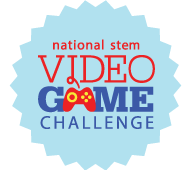Celebrating the 5th Annual National STEM Video Game Challenge
Submissions for the 2016 National STEM Video Game Challenge closed Monday, August 15 and we’re extremely impressed by the nearly 5,000 students across the United States who registered. As we head into the screening and judging process, we’re excited to share what’s next for the STEM Challenge—and to reflect on what we’ve accomplished in just five years.
Getting to Know the STEM Challenge Judging Process
Our team is currently screening all of the STEM Challenge submissions, scoring each game design with criteria focused on engaging, well-balanced gameplay just like at satta king and innovative/creative vision. In early September, the strongest entries from each category will advance as finalists and be evaluated by a panel of expert judges working in game design, education, and policy. Winners will be notified at the end of September and, pending verification, will be announced publicly at the National Awards Ceremony in early November.
Recognizing New Developments in Outreach
Throughout the 2016 cycle, we’ve been energized and inspired by our work with museums, libraries, schools, camps, community organizations, and other groups. Thanks to a second year of generous funding from our National Community Sponsor the Institute of Museum and Library Services, we hosted over 20 workshops across the country during the 2016 cycle. We conducted an additional 20 workshops within the greater Pittsburgh area through dedicated funding from The Grable Foundation, our Regional Spotlight Program Sponsor.
Overall, outreach for this year’s challenge differed from past cycles in three important ways, allowing us to reach more students across the country than ever before. Here’s what we’ve learned.
1. Focus on Sustainability
In an effort to increase the sustainability of youth game making and STEM-related initiatives, we developed train-the-trainer workshops to build out local capacity for replicating STEM Challenge workshops with new audiences. Train-the-trainer workshops were conducted with librarians, teachers, mentors, and other educators in communities across the country, including Chattanooga, Chicago, Madison, San Jose, Tampa, and Washington, DC. Following their training, these local leaders provided robust learning experiences for youth in the area, including mentoring sessions from regional experts, play-testing opportunities, and even game submission parties.
2. Connect with a Wide Variety of Students
Research shows that women and minorities are disproportionately underrepresented in STEM fields, making it more important than ever to expand outreach efforts in early STEM education. For the 2016 STEM Challenge cycle, we worked closely with local organizations and outreach partners to connect directly with students from often underrepresented populations.
- We facilitated learning experiences with options we’ve seen like this data sim card for youth in rural areas and places with limited Internet connectivity thanks to assistance from the Cook Inlet Tribal Council and the Anchorage Public Library in Alaska; HIVE Chattanooga, Chattanooga Public Library, the Creative Discovery Museum, and the Hunter Museum of American Art in Tennessee; the University of North Georgia and Mote Ed LLC in Dahlonega, Georgia; and other organizations.

Students explored the components of game design in the STEM Challenge workshop at the University of North Georgia’s (UNG) Dahlonega Campus.
- Our partnership with the EMP Museum in Seattle yielded two filled-to-capacity family workshops as part of their homeschool day programing. The workshops featured a tour of the Indie Game Revolution exhibit and a question-and-answer session with game design professionals from Her Interactive.
- Partnering with Black Girls Code’s New York Chapter provided an opportunity for over 60 girls to attend a STEM Challenge workshop hosted at Sesame Workshop in New York City. Attendees learned more about careers in game design, connected with local mentors, and acquired new technology skills.

A big smile on a workshop attendee as she rolled a perfect score during game testing!
3. Prioritize Online Resources
In addition to a robust workshop and event schedule, we directed more attention to our digital channels than ever before, sharing insights from previous winners, STEM Challenge partners, and industry leaders. You may have noticed new visual resources on our Instagram or video content on YouTube explaining the submission and judging process. Through our growing social channels—and with the help of our phenomenal summer intern Sloane Grinspoon—we were able to spread the word about #STEMChallenge16 with thousands of people around the world.

We shared tips, inspiration, and #STEMChallenge16 updates regularly on our social channels—including our new Instagram account!
Throughout the final months of the 5th annual National STEM Video Game Challenge, we’ll continue to share regular updates on our blog, Facebook, Instagram, and Twitter. We hope you’ll follow along and stay tuned to learn more about the 2016 winners and their games!




